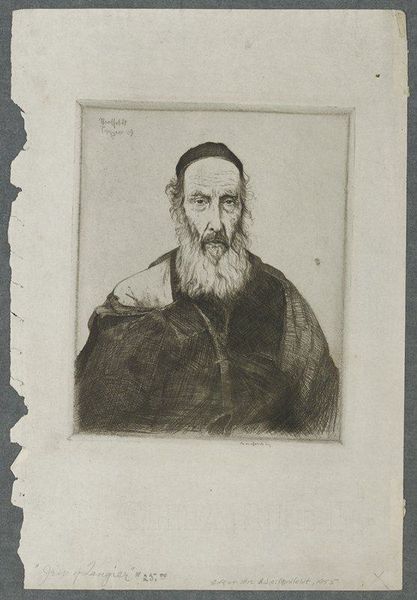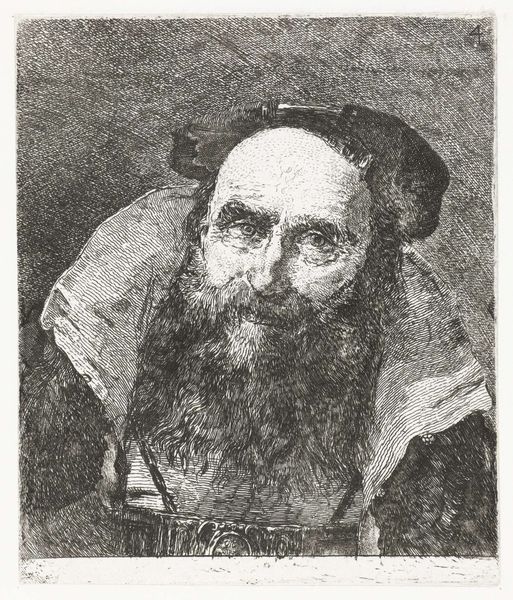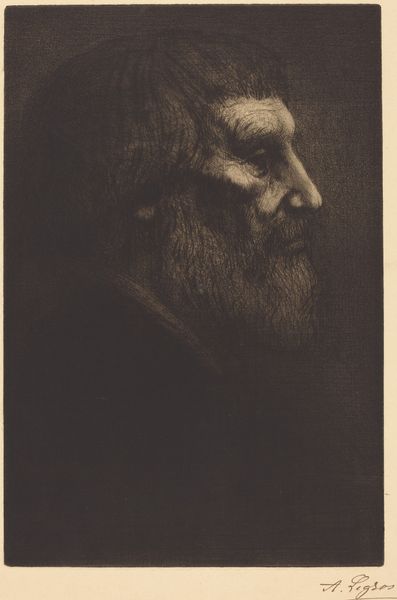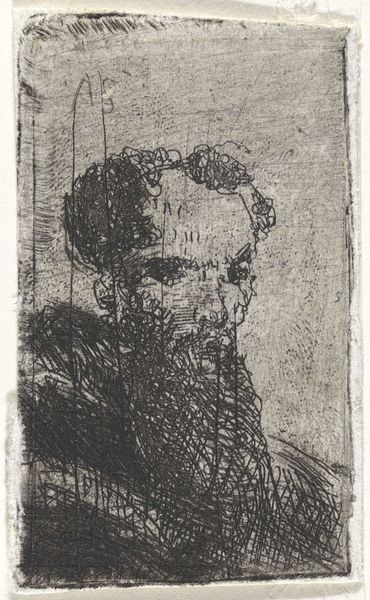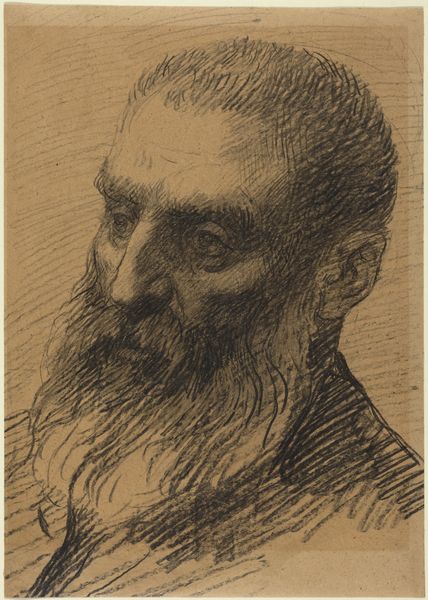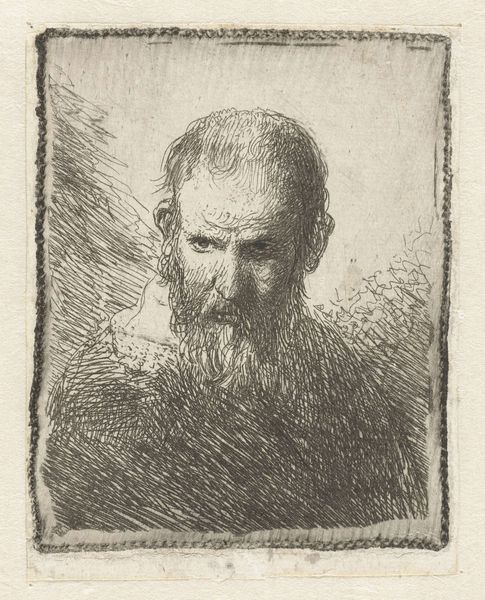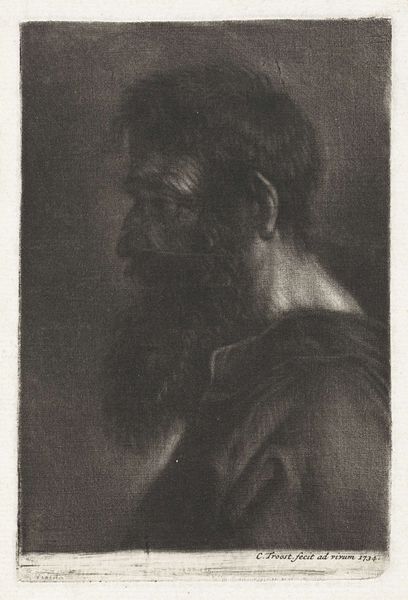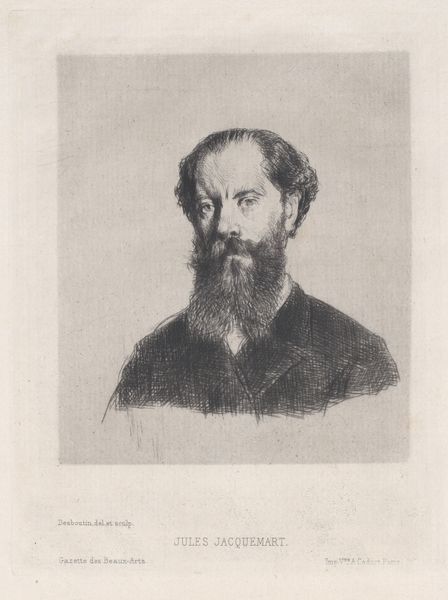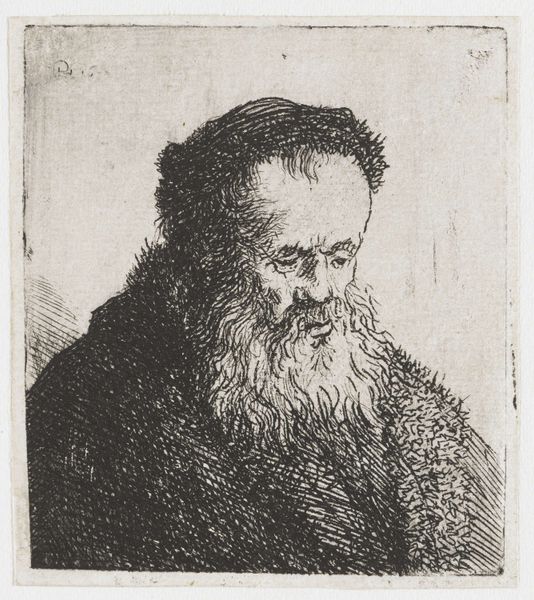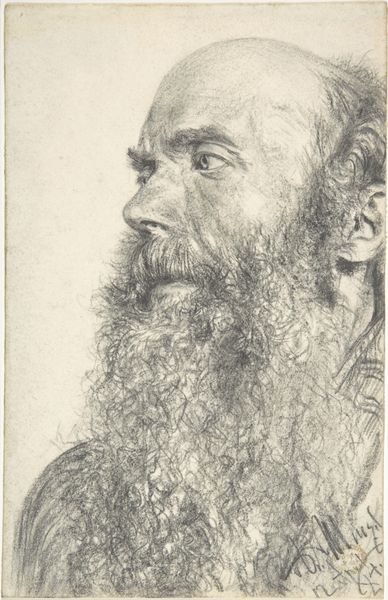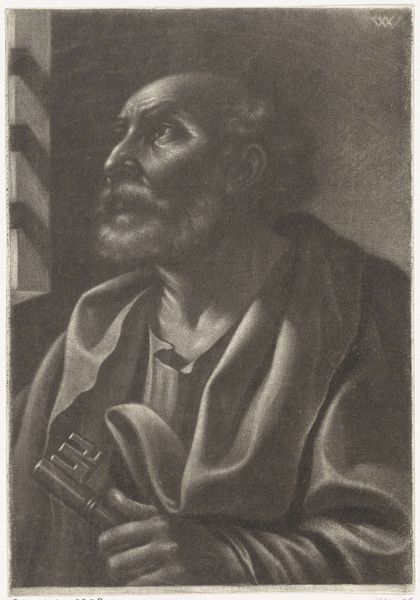
drawing, print, etching, paper
#
portrait
#
drawing
# print
#
etching
#
german-expressionism
#
paper
#
historical photography
#
portrait drawing
Dimensions: image: 57.79 × 39.37 cm (22 3/4 × 15 1/2 in.) sheet: 79.69 × 57.15 cm (31 3/8 × 22 1/2 in.)
Copyright: National Gallery of Art: CC0 1.0
Editor: This is a print titled "Michelangelo Buonarroti" created by Emil Orlik in 1911, an etching on paper. It’s a portrait and the detail in Michelangelo’s face is remarkable, particularly around the eyes. There's almost a photographic quality to it despite being created in the style of German Expressionism. What can you tell me about the context of this work? Curator: Well, it's fascinating to see Orlik, working in the early 20th century, grapple with representing a Renaissance master like Michelangelo. The very act of creating a portrait – particularly through printmaking, which allowed for wider distribution – raises questions about artistic legacy and the construction of fame. What kind of dialogue do you think Orlik is establishing between German Expressionism and the High Renaissance? Editor: I suppose that using expressionistic techniques, he makes Michelangelo look almost burdened by his genius or the weight of history, a bit of a contrast to how he's often presented. Do you think that was Orlik's intention, and how does that relate to Expressionism in general? Curator: Expressionism sought to express inner emotions and anxieties. Considering this was made before the first World War, it might show a looming unease within intellectual circles about Europe's cultural foundations. Orlik isn't just copying an image; he's interpreting Michelangelo's impact on modern consciousness and reflecting anxieties tied to rapid societal changes. Who gets to shape history, and whose story is told? That is an undercurrent. Editor: So it becomes a statement on cultural anxiety more than just a portrait, almost like Michelangelo stands as a symbol of artistic burdens of the past as felt at the time? Curator: Exactly. By looking at the institutional frameworks—the art market, museums, and even the very notion of "artistic genius"—we can better understand what Orlik critiques and reinterprets through his work. Editor: That adds a completely new layer of understanding to what I initially perceived! Thank you. Curator: It’s fascinating to consider the continuous cycles of how we, as a society, immortalize our heroes through art, even now.
Comments
No comments
Be the first to comment and join the conversation on the ultimate creative platform.
